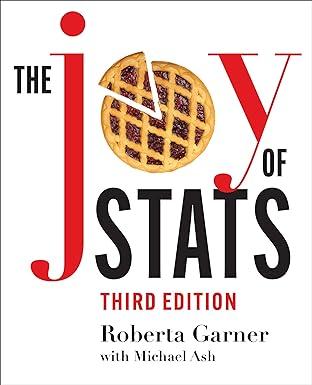Select a current issue for which opinions can be dichotomized (example: yes or no on whether bakers
Question:
Select a current issue for which opinions can be dichotomized (example: yes or no on whether bakers should be required to make cakes for same-sex weddings if they have religious objections to same-sex unions). Ask twenty people what their views are and record each person’s nickname/pseudonym and opinion. Compute the proportion that answers
“yes.” This will be the parameter pi, the population proportion in our experiment.
Now draw (pseudo) random samples of ten people from the population of twenty. You can do this by assigning each person a number, writing these numbers on a piece of paper, and then pulling ten of the numbers from a hat to form a (sort of) random sample. For each random sample, look at your list of names and record what proportion of the ten people in the sample said “yes” This proportion is the sample statistic. Throw all the numbers back in the hat to simulate sampling with replacement before you draw out your next sample. More simply, you can just write people’s names on scraps of paper and draw ten of them out of the hat each time, and record how many of the ten had answered “yes” to your question. Then put the scraps back in the hat and draw a new sample.
Keep doing this until you have recorded the results (sample statistic) from a lot of samples.
Record each sample proportion.
a) What is the range of sample proportions?
b) When you take the mean of the sample proportions for all your samples, what is it?
c) Make a histogram of your sample outcomes. What does it look like?
If you are doing this as a class experiment, compare your results to those of others.
d) Does the value of the population parameter make a difference in the sampling distribution of outcomes? (At what value of the population parameter do you get the greatest variability in sample outcomes?)
You can simulate this experiment by “creating” your own initial population with its proportion of “yes” answers. You can also experiment by “creating” or actually surveying a larger population and by varying sample size.
Step by Step Answer:

The Joy Of Stats A Short Guide To Introductory Statistics In The Social Sciences
ISBN: 9781487527297
3rd Edition
Authors: Roberta Garner, Michael Ash





